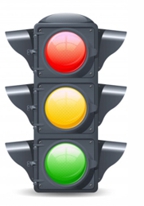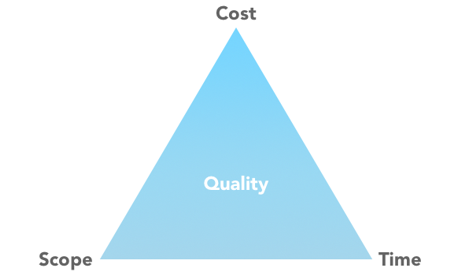
In this blog we will take a look at the fundamentals of project management. We look at the key terms project managers use, and look at some of the overall techniques that are used by professionals in this space.
To get started we are going to take a look at 12 project management terms that every project manager should know. Before I jump into the terms, I would like to share a story of why these terms are important.
Being a entrepreneur I was thrust into different roles and fancied myself a pretty good project manager given that I was managing multiple clients, projects and employees. When you work in your own ecosystem you can get away with a lot, especially if your team doesn’t have an expectation of the standards set out by the Project Management Institute. Years later when I was working in a more collaborative environment, with other project managers, various terms were being used that I was just never exposed to. I found myself quickly Googling terms after conversations to try to catch up to the lingo so as to not look out of place.
This blog is for people who find themselves in a similar position or who are looking to take on more responsibilities that have project management requirements. Words like RAG, GANTT and TRIPLE CONSTRAINT are going to be words and terms that roll off your tongue with ease after you read this blog.

This one is simple. It stands for RED, AMBER, GREEN. It is a very common term used to determine if something is on or off track. Much like a traffic light, red means something is stopped or stuck and needs immediate attention. Amber means, things are slowing down and a stop might be in the near future, and green means all things are good and on track.
A Gantt chart is a horizontal bar chart used in project management to track projects from start to finish. Simply put, a Gantt chart is a visual view of tasks scheduled over time. Gantt charts are used for planning projects of all sizes and they are a useful way of showing what work is scheduled to be done on a specific day. They also help you view the start and end dates of a project in one simple view.
This is one of the first steps in being a project. It is where you break your project into manageable pieces and have some logic around it. Simple things like tasks, time, budget and the people who will be working on it.

The triple constraint is the combination of the three most significant restrictions on any project: scope, time/schedule and cost/budget. The triple constraint is sometimes referred to as the project management triangle or the iron triangle. A change in one factor will invariably affect the other two. In other words, it’s all about trade-offs. As project manager, it’s your job to balance these triple constraints and manage expectations so everyone understands what it takes to achieve project success.
This is the framework used to manage the project. Some of the more common frameworks are Agile, Prince2, PMBOK or a combination of them. At the end of the day these are designed to provide a method that can be applied to a project to provide structure to keep the project on a critical path.
The business case is usually a document that provides the reason for the project. It is important for the project manager to understand the why of the project and not just the execution. Great project managers will have a deep understanding of the business case in order to execute the project in line with the reason it exists in the first place.
The requirements of a project are the must-have items that can’t be left out of the completion of a project. For example, the construction of a home has to have hardwood flooring through-out the home. The colour of the hardwood flooring could end up being up to the construction company, unless otherwise specified, but the flooring can not be carpet.

A project should be able to identify risks that could creep into the project and delay or run the project over budget. Being aware of the possible risks could help the project move along the desired path. If the risks are identifiable, then a good project manager will have prepared for the possible rise of the issue.
Speaking of issues. Issues are the warning sign that the risk to the project might be coming into play. Project managers should listen for the signs of risk and get in front of them quickly. Where there is smoke there is often fire.

A project milestone is a way to observe, measure and monitor the progress and/or performance of a project. Milestones in general exist as intermediate stages that must be fulfilled before reaching a final goal or objective. In terms of their usefulness, milestones can be defined and provide a foundation from which to monitor progress.
A stakeholder is any person, organization, or group that has a stake in the project. Thus, stakeholders can be internal or external to the business or project. A stakeholder will have a vital interest in the business or project because the end result will have a direct impact on them.
This is a group of people that have been tasked to provide advice, insight and guidance to the project. The committee is there to support the project manager and has a stake in the final outcome of the project.
Organizations are embracing different ways of working across the business. In order to ensure strategic alignment is maintained, there is an ever-increasing need to understand what work team members are spending their time on, no matter how that work is delivered.
SmartDesk has developed a project management application integrated into a cloud based CRM. Project management teams and sales teams now have the ability to seamlessly connect their accounts for greater transparency and efficiency.
The latest disrupter in the CRM market
Initially a lead management solution with some integrated solutions like websites and blogs, SmartDesk has evolved into a multi-channel marketing hub with over 50 full-service features that come standard with the software. The SmartDeskCRM team worked closely with clients to build out solutions that addressed common pain points that could replace the variety of digital tools businesses were using online. The team at SmartDeskCRM has taken the approach of providing companies with easy bite-sized data points to quickly view the health of your marketing activities and prospects activity. A lot of CRM solutions are offering these metrics but the way SmartDesk has put the dashboards and navigation together makes it a truly unique experience.

“It’s problematic for companies to become experts in using all of the various digital tools in the marketplace. At the end of the day the goal is the same: make it all work so you can have more leads, more clients, and more sales. SmartDesk gives companies and agencies one application to use for their digital marketing, email marketing, website, leads, blog, and sales, project management, all in one environment,” said Craig Poulton.
From the beginning, SmartDeskCRM had a vision to bring small and medium companies to the global marketplace. “For these businesses to survive against the larger chains, they have to be able to compete in the digital marketplace, not just the physical,” said Robert Killin.



1.844.493.1098